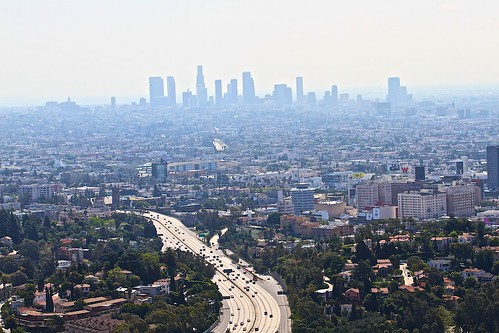美國環保署(EPA)擬提高地面臭氧──也就是光化學煙霧──的標準至65至70 ppb,以保護大眾健康和環境。
依照美國《潔淨空氣法》,EPA必須每5年重新審核此標準,這次的修改其實已經晚於規定。經環團上訴,EPA依法院的命令需於2015年10月前制定出新標準。
地面臭氧恐致早逝 兒童、老人最受影響
汽車、卡車、巴士、工業和電廠排放的氮氧化物、揮發性有機化合物以及燃料、溶劑和油漆等物質在陽光下曝曬,便會形成地面臭氧。哮喘患者、兒童、老人和在戶外活動或工作的人最容易受影響,目前全美有1/10的兒童被診斷出有哮喘。
EPA上一次修訂光化學煙霧標準是依2008年的國家環境空氣品質標準法,將標準修改為75 ppm。然而研究指出,暴露於目前標準75 ppb以下的臭氧,就可能傷害呼吸系統並引起或惡化哮喘和其他肺部疾病。暴露於75 ppb的煙霧,與因呼吸系統以及心血管疾病而起的早逝有關。
根據EPA的分析,將標準提高至65到70 ppb更能保護兒童,預防320,000到960,000例哮喘發作和減少330,000到1百萬天的兒童病假,更能預防超過750至4,300例早逝、1,400至4,300例哮喘相關急診病例,以及65,000至180,000天工作病假。
「企業代價過高」 共和黨反對提高標準
不過共和黨反對此標準,認為這對企業造成的代價過於昂貴。
將任參議院環境和公共工程委員會主席的奧克拉荷馬州參議員James Inhofe說,「EPA的提案將降低國家的經濟競爭力並扼殺數十年的就業機會。EPA上一次的臭氧標準,根據EPA自己的估算,每年增加了900億元成本。」
美國石油學會也代表其會員表示反對,主張新標準對於其成員來說太過昂貴。
明年底訂新規 美環署:健康效益將遠高於成本
面對國會新多數共和黨和石油與天然氣業者的壓力,EPA表示其新標準乃是根據近期與地面臭氧損害健康有關的大量科學證據來制定。2008年至今的相關研究已累積超過1,000份。
EPA反擊表示,新標準的效益會遠高於成本。透過避免氣喘發作、心臟病發作、減少病假和早逝,若以70 ppb為標準,2025年整體健康效益將達每年64億到130億,年度成本約在39億,若以65 ppb為標準,則能達到190億至380億,年度成本約50億。
EPA說,越嚴格的臭氧標準,將更能保護患有哮喘或是必須住在污染地區的低收入和弱勢家庭。EPA將在聯邦公報發表提案後,徵求公眾意見90天,舉辦公聽會,並將於2015年10月發表最終版的臭氧標準。
The U.S. Environmental Protection Agency is proposing to tighten air quality standards governing ground-level ozone, or smog, to within a range of 65 to 70 parts per billion (ppb) to better protect public health and the environment.
EPA last updated the health standard for smog, called the National Ambient Air Quality Standard, in 2008, setting it at 75 ppb. The Clean Air Act requires the agency to review this standard every five years, so this proposal is overdue and the agency is under a court order in a case brought by environmental groups to finalize a new standard by October 2015.
In the face of constant attacks by the incoming Republican majority in Congress and by the oil and gas industry, the agency says its proposal for a new, stricter standard is based on “extensive recent scientific evidence” about the harmful effects of ground-level ozone, including more than 1,000 new studies published since the last update.
Ground-level ozone forms in the atmosphere when emissions of nitrogen oxides and volatile organic compounds from cars, trucks, buses, industries, power plants and fumes from fuels, solvents and paints “cook” in the sun.
Studies indicate that exposure to ozone at levels even below 75 ppb can harm the respiratory system and cause or aggravate asthma and other lung diseases. Smog exposure at this level is linked to premature death from respiratory and cardiovascular diseases.
People most at risk are those with asthma, children, older adults, and those who are active or work outside. The EPA says stronger ozone standards will provide an added measure of protection for low income and minority families who are more likely to suffer from asthma or to live in communities that are overburdened by pollution. Nationally, one in 10 children has been diagnosed with asthma.
According to EPA’s analysis, strengthening the standard to a range of 65 to 70 ppb will provide much better protection for children, preventing from 320,000 to 960,000 asthma attacks and from 330,000 to one million missed school days.
Strengthening the standard to a range of 70 to 65 ppb would better protect both children and adults by preventing more than 750 to 4,300 premature deaths; 1,400 to 4,300 asthma-related emergency room visits; and 65,000 to 180,000 missed workdays.
But Republicans in Congress object to the proposed standards as too expensive for industry. Senator James Inhofe, an Oklahoma Republican who will chair the Senate Environment and Public Works Committee when Congress reconvenes in January, said, “EPA’s proposal to lower the Ozone National Ambient Air Quality Standard to between 65 parts per billion and 70 ppb will lower our nation’s economic competitiveness and stifle job creation for decades.”
“The EPA’s previously proposed ozone standard came with a price tag of up to $90 billion per year, by EPA’s own estimation,” said Inhofe.
EPA says that the benefits of meeting the proposed standards will far outweigh the costs.
These large health benefits will be gained from avoiding asthma attacks, heart attacks, missed school days and premature deaths, among other health effects valued at $6.4 to $13 billion annually in 2025 for a standard of 70 ppb, and $19 to $38 billion annually in 2025 for a standard of 65 ppb. Annual costs are estimated at $3.9 billion in 2025 for a standard of 70 ppb, five billion for a standard at 65 ppb.
The American Petroleum Institute, API, a national trade association representing the oil and natural gas industry, objects to the proposal as being too expensive for its memebers.
EPA will seek public comment on the proposal for 90 days following publication in the Federal Register, and the agency plans to hold three public hearings. EPA will issue final ozone standards by October 1, 2015.
※ 全文及圖片詳見:ENS








